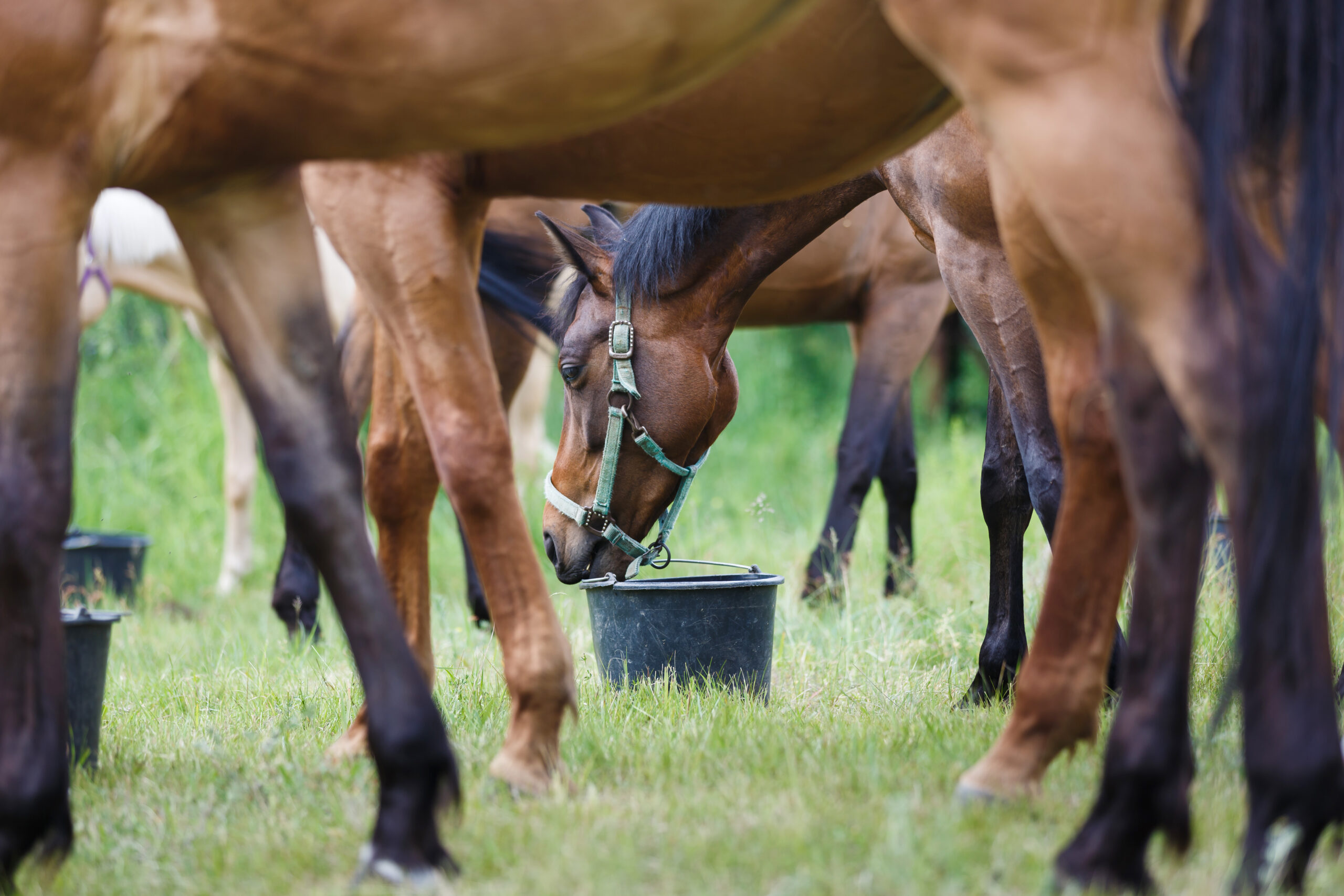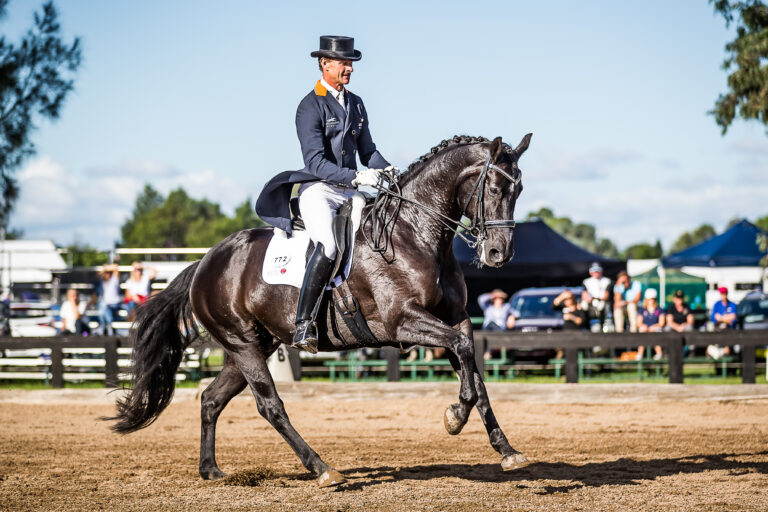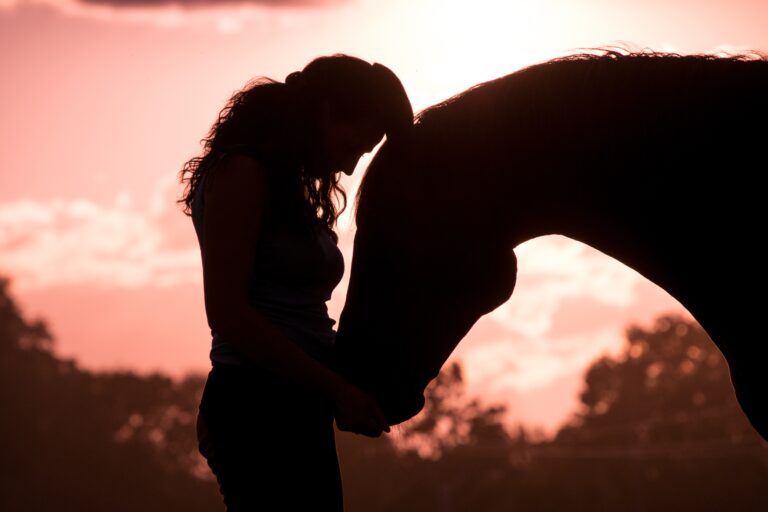According to historical accounts, when horses were used daily for transportation, work, and war, their caretakers would feed their charges no fewer than four times a day. To maintain reliable performance day in and day out, caretakers knew that horses must eat frequently to sustain energy levels.
Modern sport horses have entirely different demands placed on them. The work is not only less strenuous, but horses spend much less time actually engaging in the activity.
Feeding frequency affects various physiological parameters, particularly gastric and intestinal function, as well as behaviour. But are these changes important to the health and welfare of the horse?
Forage fraction
When it comes to the forage fraction of the diet, there is no question that horses should have forage available for as many hours as possible in a day. This can be accomplished by allowing access to adequate pasture, by feeding hay several times throughout the day, or by offering hay free choice. Horses that are offered free-choice hay will consume more than those offered limited amounts. As horses consume more hay, they drink more water, so clean water should always be available when hay is offered.
Horses eat hay and concentrates at different speeds. Research has shown that it takes up to four times longer to consume the same weight of forage as it does concentrates.
In pasture situations, horses usually graze 12 to 20 hours a day. Because fresh grass has an abundance of moisture (70-89% water), more fresh forage must be eaten to achieve the same amount of dry matter intake as hay, which has much less moisture (10-15% water). Stabled horses spend six to eight hours consuming hay when fed concentrate at more than 20% of the diet. When fed free-choice hay without concentrate, horses spent 12 to 16 hours eating hay.
Specially designed feeders that slow intake of hay are useful for extending the hours that horses in stables or yards spend eating hay, mimicking approximately the time spent grazing. These feeders are especially useful for horses with low energy requirements, like easy keepers.
Is hay availability more important during the day or night? In a study on eating behaviour conducted at the University of Kentucky, horses spent more than 25% of daylight hours eating hay, but less than 15% of their night-time hours, spending most of the time sleeping (more than 50%) between 12am and 7am. In the same study, the researchers found that frequency of feeding affected the amount of hay the horses ate. When horses were fed eight concentrate meals per day with free-choice hay, they consumed more hay than when only fed two concentrate meals per day. If you need your horse to consume more forage, feed the concentrate in smaller, more frequent meals.
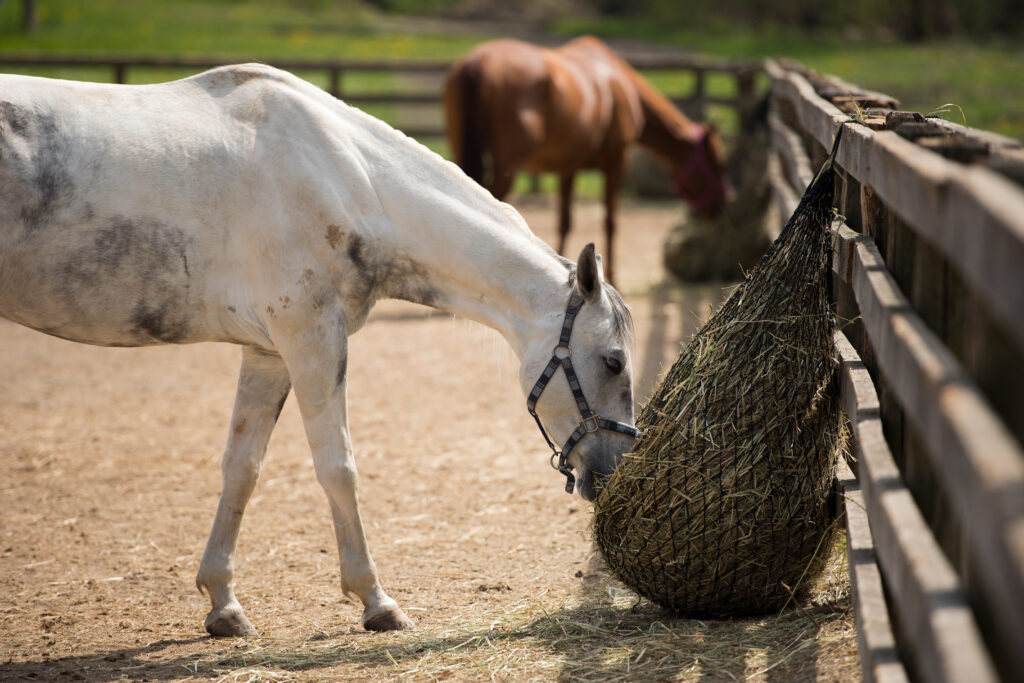
Concentrate meals
When feeding concentrates, increasing the frequency and decreasing the quantity per meal have beneficial effects. One advantage stems from the moderation of the glycaemic response to a meal, the consequences of which are currently a much-discussed topic.
Researchers at The Ohio State University fed the same quantity of a concentrate in one, two, or three meals over a 24-hour period. Marked effects on the glycaemic response to the feeding schedule were noted. The single meal produced a much higher glycaemic response and consequential insulin release than the others.
Interestingly enough, researchers also found that horses had a higher glycaemic response to a meal in the morning, even if horses were fed multiple meals throughout the day. Therefore, in horses where glycaemic response needs to be controlled, the smallest meal of the day should be in the morning.
The same researchers found an influence on glycaemic response from the order in which the hay and grain were fed. When hay was fed 15 minutes before the concentrate, the horses fed once per day had higher glycaemic responses than when fed the concentrate 15 minutes before the hay. This same consequence was not seen when the horses were fed two or three times per day. Also, when concentrate was fed before the hay, horses engaged in wood-chewing more frequently.
Concentrate feeding has been found to be correlated with cribbing and stereotypic behaviours. Stereotypic behaviours like wood-chewing and cribbing are thought to be responses to boredom, but may also be indicative of inflammation or abnormal acidity in the stomach. Chronic cribbers have lower gastric pH than their non-cribbing peers and antacids have been found to have a positive effect on reducing the amount of cribbing. Concentrates induce cribbing, so with cribbers it may be beneficial if fewer meals are offered in a day. While providing adequate long-stem forage reduces occurrence, it may not eliminate the problem completely.
Number of meals in a day
Aside from the problems associated with elevated glycaemic response, another problem with large concentrate meals centres around gastrointestinal capacity. Large meals can overwhelm the digestive capability of the small intestine, the result of which is too much grain in the hindgut to be fermented by the microbial population.
In general, when the total quantity of the concentrate is greater than 500g concentrate per 100kg body weight, the concentrate should be divided into more than one meal. Processing techniques have evolved over the last few decades that have improved digestibility of grains. Because of this, the maximum amount of concentrate recommended per feeding is more likely to be 300g per 100kg body weight for feeds with 30-40% starch.
Meal size recommendations would be even lower for concentrates with starch contents higher than 40%, or straight grains. Feeding meals with starch amounts greater than 1.1g/kg body weight have been associated with an increased risk for the development of gastric ulcers.
Development of gastric ulcers is perhaps the worst consequence of infrequent feedings in a day. Horses without access to feed for 12 hours were found to have gastric pH as low as 2 and the development of gastric lesions imminent. A drop in gastric pH is often seen after feeding grain or concentrate meals; however, in a study comparing two meals per day with feeding every 90 minutes, there were no statistical differences in the pH drop from feeding. In contrast, horses on 24-hour pasture access or fed free-choice hay were found to have more normal gastric pH of 4 to 6, once again highlighting the advantages of constant access to forage.
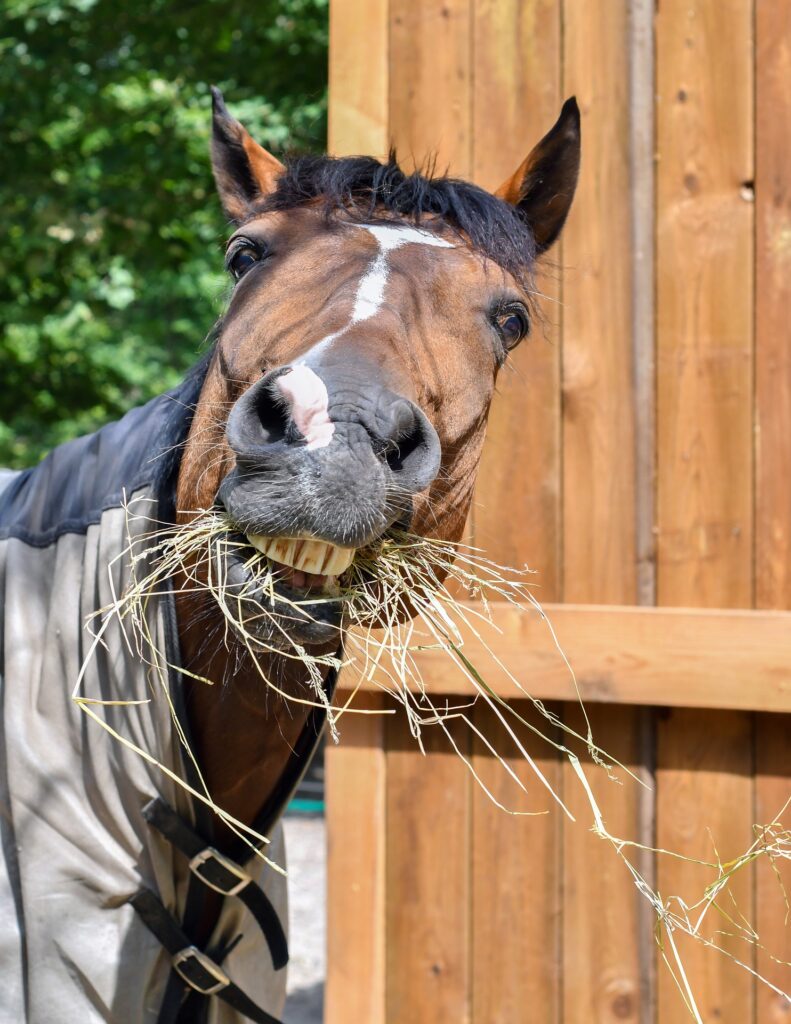
Selecting feeds with meal frequency in mind
Finding the right feeding frequency to control physiological, digestive, and behavioural issues is dependent on the amount of feed required to maintain the horse in good body condition. Constant access to forage, whether it is hay or pasture, is integral to a well-rounded feeding program. Limiting concentrate meal size controls spikes in glycaemic response and avoids overpowering digestive capacities. Behavioural issues should be taken into consideration.
When more calories necessitate higher concentrate intake, then more frequent smaller meals are recommended, especially if a high-starch feed is used. Turning to other sources of calories such as fat can be a way to increase the energy density without increasing the starch content or volume of the ration.
KER Equi-Jewel is a buffered, high-fat, low-starch, cool-energy conditioner that also includes KER BMC, which is scientifically proven to support gastric and hindgut health. The addition of supplements can be used strategically during periods where the routine and frequency of your feeding program has to change due to competition or change of environment to help protect gastrointestinal health.
Kentucky Equine Research produce a number of digestive health supplements, namely KER Neigh-Lox, an antacid and coating supplement for horses at risk of gastric ulcers and KER EquiShure, a time-released hindgut balancer to help maintain normal hindgut pH to reduce the risk of hindgut acidosis and associated disorders.
Perhaps not every modern-day horse needs four meals a day like their hard-working predecessors, but careful consideration of the factors that determine the need for more frequent meals will go a long way in optimising the horse’s diet.
The team at Kentucky Equine Research is here to help! If you have any queries about a suitable diet for your horse or have questions on how to most effectively manage your feeding regime, contact Kentucky Equine Research’s Nutrition Consultation Service on 1800 772 198, email advice@ker.com or visit www.ker.com
This article was written in conjunction with KER and first appeared in the March/April 2019 issue of Equestrian Life.
